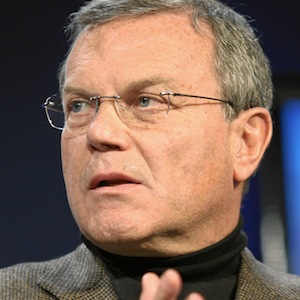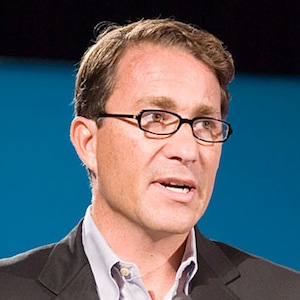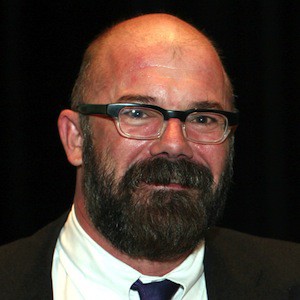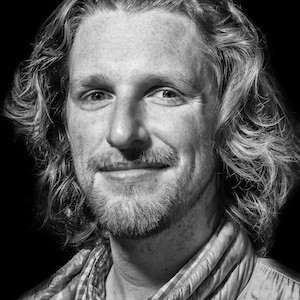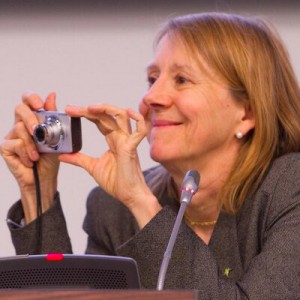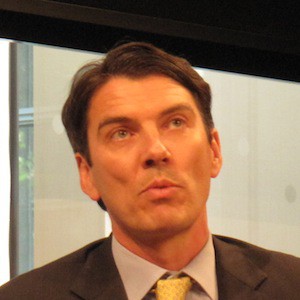Martin: If we could start with a five-minute bio.
Doc: It’s funny. My favorite Dorothy Parker line is that she prefers the company of younger men because their stories are shorter. I’ve accumulated a lot of stories, so I actually began, in a way in journalism. I wrote for my high school paper, my college paper. I was involved in sports to the degree that I reported on that and ran the scoreboard at my college, college’s football games, and stuff like that. After I successfully fought the draft, which was what you did during the Vietnam War, and if you are part of the class of people that didn’t believe in the war and all that.
But that was a source of journalistic impulse as well, on my part, because I wrote a lot about that at the time. Not much of it made publication, but one of my first jobs is at a newspaper, a suburban newspaper in New Jersey. I had a lot of fun doing that. It was an incredibly formative experience that is no different than almost everybody else’s kind of cub reporter. I did it all, including setting type. There were three or four parts to the letterpress process. When different parts of it when on strike, which they did because this was New Jersey, right? The linotype operators would go on strike. It was called stereo. I didn’t know what stereo was short for, but something longer. The guys that poured massive amounts of lead into the large vats, those guys, or the press operators went on strike, then we would operate these different things. That was fun, too. All of it obsolete today, but it was instructive. I was also a photographer. I did a lot of photography. I’m still a photographer and I got my start doing newspaper photography, reporting on accidents and ball games and the rest of it. I ran, in that chain of papers, which is now gone, one of the outer suburban local papers, in West Milford, New Jersey, which is where Greenwood Lake is. From there, I went to work for a…
Jeez, that was during the office of economic opportunity period when there was still The Great Society and all that stuff. One of the outfits I did reporting on hired me on, to do community organizing. I did not do very well at what Barack Obama wrote a book about, community organizing in Chicago. But even there I was involved in starting, unsuccessfully, a local nonprofit radio station. Then I went to work for an actual radio station. I did news reporting there. In which, among other things, I developed a weird, arcane skill, which is the ability to look at a newspaper and, on the fly, write an on-air story, just by paraphrasing what I was reading.
I just switched the words around. I don’t know why I developed a skill for that. But often it was close to deadline I’d just pick up the paper, hold it flat so it wouldn’t crinkle and just, instead of… “Three people were killed in an accident. An accident in which three people were killed took place in West Milford,” or something like that. From there, I stayed in radio, in New Jersey, then in North Carolina. I really, a certain point — this is an important thing, in respect to the Internet — I found myself in, let’s say 1977 so I would have been about 30 years old, with a wife, two small kids, living outside Durham and Chapel Hill, North Carolina, out of a job. The radio station I worked for was having hard times. The consulting practice that I had going, where I wrote a lot of advertising copy for people, because I was a pretty good writer.
The newspapers, there were only a few of them. The one in Durham, the one in Chapel Hill had just gone out of business. They were way ahead of their time in that respect. It was a daily in Chapel Hill. And the News and Observer in Raleigh. None of them were hiring. Because the Internet did not exist at that time, my scope of employment opportunities in journalism were geographic. Unless I was going to move somewhere else. And I had no means to do that. I didn’t have any money. When two of my listeners at the radio station, where I was still telling jokes on the air, because that was what I started doing when we couldn’t sell advertising at the radio station. I made up ads for things that didn’t exist and I created this character which somebody else called Dr. Dave. The fossil remnant of which is the nickname, Doc. My real name is David. I didn’t give myself that nickname, either. Just somebody said, “Doctor Dave will be on in five minutes.” That also involved improvisation, by the way. I’d just go on and tell jokes.
It was weird, kind of a Robin Williams thing. And also leveraging an unfulfilled and probably luckily avoided ambition to be a stand-up comedian at one point. I wanted to do that. But I decided not to, because I had a wife and two small kids and it was a not a smart thing to do either. But anyway, two listeners who knew that I could write copy approached me to start an advertising agency. Their names were Hodskins and Simone. So that became Hodskins, Simone and Searls. Hodskins, Simone and Searls — very long story very short — became, over time, one of the top, if not the top, high-tech advertising agencies in Silicon Valley. We moved from North Carolina to Silicon Valley.
Martin: What year was that?
Doc: 1985. We started the agency in ’78 and were successful enough by ’84 that we opened a new office out there. I came out in ’85. We won a whole lot of business. For the next 15 years, my name was on a building in Palo Alto. I got a lot of experience dealing with… Actually, I met Dave Winer, who you’re also interviewing, in 1982. He won’t remember that. But I did, because I went to his booth that he and his brother were running, I think in 1983, in Atlanta, Georgia, at a ComDex there. And saw his outliner program and was blown away by it. And still am. I’m still blown away by outlining and its implications. Many years later Dave and I became good friends, but back then I was just aware of what he was doing and thought it was amazing. There were many others like that, that I knew over the years. But I never gave up writing. I still did freelancing, from time to time.
Martin: Just to be clear. Were you the creative head of this agency?
Doc: I was the co-creative director. The three original guys were the business guy, the art guy and the copy guy. I was the copy guy. Ray Simone was the art guy. And David ran the business, very ably. He was a terrific manager. Ray was a terrific creative director. At a certain point, I realized that I was better at dealing… I loved relating to these companies. I didn’t like the level at which we engaged them as an advertising agency or as a PR agency.
Martin: Who were your clients between 1985 and… I mean, pick two or three.
Doc: Sun Microsystems, parts of Apple, Logitech, Symantec, several in Europe, Grouple, Xena Theta Systems, Hitachi Semiconductor. A lot of smaller ones that have come and gone. There was a printer company called Data South, in North Carolina, that was amazing. But I went to a lot of the conferences. I got to know Esther Dyson pretty well. And Tim O’Reilly, who would be great for you to talk to, as well. Just a whole bunch of them. And became involved in the industry. That was, even while I was covering it… It’s interesting. If you go back, I have a section at Searls.com called Reality 2.0, which is where I put articles I wrote that nobody would publish. Because I couldn’t find anybody to publish them. I had been approached by PC Week and a couple of other publications to write for them. In every case, they turned me down after I submitted what I wanted to do.
Martin: Why?
Doc: For the most part, those publications were outsourced house organs for their advertisers, quite honestly. I wanted to be able to say what the hell I pleased. I wanted to be funny or just irreverent, when I needed to be. It just didn’t fit the mold. Jay Rosen talks about this. There is a language. There are formalities. There are protocols. There is a typical approach to the way a given publication sounds. I’ve met a bunch of people who worked, say, for Newsweek or Time. There was this template. “This is how we sound. This is our style. We shouldn’t know it’s you writing it, even though you’re one of the three or four names in the byline at the bottom.” It’s the Time Magazine sound, the Newsweek sound. The New York Times is probably the same way, though it’s a little looser in that respect. With the exception of Linux Journal, which approached me in 1996… I was involved in the founding of it, actually, in 1994. The publisher, a good friend named Phil Hughes. I’ve actually never been asked to write for anybody. It’s an interesting thing to me. It’s weird.
Martin: I think my colleague Tom Friedman referred to you as one of the most important technology writers out there. That’s a pretty good endorsement.
Doc: I really appreciated Tom saying that. I think I’m good. But I’m not standard. I have the same problem in journalism that Dave has had among programmers. Which is, he’s his own guy. I’m my own guy. I don’t really fit any of these templates. But I’m not bothered by that. I’m really not. It’s not a complaint. It’s an observation. I take a very long view. Your concern with history here, and my feeling about the history of journalism in the Internet era is very early. We’re still in the Cambrian explosion period. I’m really into geology. I think we’ve been in the Pre-Cambrian and the early Phanerozoic and now we’re kind of in the middle of the Cambrian explosion. Everything’s an experiment at this point. The trilobites are trying their best to survive. The horseshoe crabs may carry on.
Martin: I forgot to do one of my main jobs, which is to say we’re here (in New York) on March 7th, 2013, interviewing Doc Searls.
Doc: Excuse me.
Martin: So you’re running this agency in Silicon Valley, from 1985 until 2000. You said 15 years so I just did the math.
Doc: It lived from 1978 to 1998. It was acquired in 1998 by Publicis, a big company from France that’s acquired a lot of advertising agencies. It was one of the Silicon Valley agencies they acquired. By that time I was on the board, but I was fairly inactive. We would send business each other’s way. We decided to make it just an advertising agency, rather than advertising and PR agency. I had already spun off the Searls Group as not so much the PR, but the marketing side of that. I turned the Searls Group itself into much more of a pure consultancy. I was dealing with people higher up in companies. Because almost without exception, the marketing communications directors, the people who were in charge of advertising and PR had no power.
I’d much rather deal with the CEOs or the top IT CIO type people, though they weren’t called CIOs back then. That’s a more current term. But I wanted to deal with the people who were actually in charge. That consultancy still exists. I still make money doing that.
Martin: At some point in that era, late ’90s you must have partnered with your co-writers to do Cluetrain. Why don’t you explain what that was, because I think a lot of our viewers want to know. And how that came about?
Doc: The Cluetrain Manifesto was born of the common frustrations that four guys had with what became of the promise of the Internet in its earliest years. I date the Internet that we know now and that I think will exist for the fullness of time to 1995. 1995 was when the perfect storm of ISPs, dial-up access, the graphical browser especially, that was the biggest thing, domain names for sale… All of those things together made it possible for anybody to publish, for anybody to run their own radio station, for anybody to run their own TV station, for anybody to do what the hell they pleased in a space that we’d never seen before, that put all of us at zero distance from everybody else. It didn’t matter where we were in the world. At something close to no cost at all, anybody could communicate with anybody. Anybody could run their own printing press, as it were. To me that was just fundamental. That’s where Dave and I were in absolute agreement. And a lot of other people were. By 1996 I had become friends with Chris Locke, who was one of the founding figures in the net that we know now. He worked on Meckler Web with Alan Meckler. Is it Alan Meckler?
Martin: Yes.
Doc: Yeah. Alan Meckler. And Chris was more than anybody I knew, really an absolute uncompromising iconoclast. I once joked about Chris that he never crossed a bridge he didn’t burn. He would bite any hand that fed him, usually with good cause and sometimes just for fun. And was just a fabulous writer. An enviably good writer. He and I became friends through a retreat that was really seminal, that Jerry Michalski held in King of Prussia, Pennsylvania in August of ’96. A lot of other, since then, important people were also there. But Chris and I just bonded over giving shit to whoever we felt like giving shit to, because they deserved it. We developed a relationship where we’d talk to each other on the phone every few days about all the things that we thought were stupid at that time. This is in ’97-98. In late ’98 we were pretty alarmed that here was the promise of the Internet and all the big money was going into recreating the old offline world, online. Let’s make a mall. Let’s make a retail operation. Let’s build some enclosure and put a bunch of stuff in there, where we’re the only way to get into that. It seemed to us, that’s silly. The Internet is for everybody. It makes that kind of thing obsolete. In our conversations, Chris at one point said, “I’d like to bring David Weinberger into this.” It turns out, he was having the same kind of conversations with David Weinberger. I knew David from his commentaries at NPR, but I didn’t know him otherwise. Chris was in Boulder, Colorado. I was in the Bay Area, and David was in Boston. The three of us got to talking on the phone and decided we need to publish something. I don’t know whether it was caused by this or not, but one of the factors that led into it was that all three of us made our money selling our consulting time to companies of various kinds largely for marketing. We shared war stories about the kinds of clients we had and how we would select them. Or, de-select them as the case may be. At one point I said, well you know my technique is I have what I think of as the logic of marketing. Which is markets are conversations, conversation is fire, and therefore marketing is arson or should be arson. If you want to set a fire, I’m your guy. If you don’t, go have somebody else go write your press releases.
I think it was Chris who said, why don’t we test that thesis? Let’s just put something up. It may have been David who said that. For whatever reason, we decided let’s put something up. Chris at that time brought in saying we need somebody more technical than any of us. Even though all three of us are fairly technical in different ways. But somebody who’s really good at doing a website and was of a similar mind. He brought in Rick Levine who happened to live also in Boulder and worked for Sun Microsystems at that time, and was an expert in Pearl and other kinds of code. Rick joined the conversation. It was the four of us, and we decided to make it a manifesto because that worked for Marx, and have 95 theses because that worked for Luther.
The name Cluetrain came along when one of us related an old Silicon Valley epitaph that said, the clue train stopped there four times a day for 10 years and they never took delivery.
One of us said, well why don’t we see if that domain name’s taken. I looked it up, saw it wasn’t taken, bought it on the spot for 75 bucks. That’s where the name Cluetrain came from. There wasn’t much more thought that went into it besides that. It was just like, “sounds good. Let’s do it.”
As of today, the word Cluetrain is tweeted many times a day. It appears according to Google Books in one new book a day. An average of well over 9,000 books that have the word Cluetrain in it.
We created a neologism with that. When it went up in March or April of ’99, Chris I think had the longest list of subscribers to his irregular kind of newsletter called “Entropy Gradient Reversals,” or EGR. David had a list too, and he had an online pub called “JOHO: Journal of the Hyperlinked Organization.” I had a much smaller list at that time of just friends. It got picked up by Tom Petzinger in his column in “The Wall Street Journal.” He interviewed Chris, and I think he talked to me and David, too.
But Chris was the star, and he got the little wood cut head shot on the front page of the business section of the Journal. In one day, my emails went from 15 a day to hundreds. It caught fire. It absolutely caught fire.
Martin: We all have our interpretations of what this notion of markets as conversations means and how it relates to our business. But, can you characterize how you think it relates to journalism?
Doc: Yes. Before we get to journalism I’d like to say that an interesting thing that happened with Cluetrain is that the most quoted line was the first one which was markets are conversations. I’ve often felt that it’s been totally misunderstood. It was basically, as Jakob Nielsen who’s the usability king told me later, and I hadn’t realized it. He said you guys defected from marketing and took sides with markets against marketing. He said, you spoke in the second person voice to marketing from the position of customers.
Martin: Well, Nielsen’s sort of the anti-banner guy going back…
Doc: All the way, yeah.
Martin: Going back before…
Doc: Before there were banners.
Martin: We’ve witnessed this struggle of supporting journalism through more traditional forms of advertising and trying to keep Humpty Dumpty together. But before we get there, you were saying…
Doc: Well Humpty Dumpty will be put kept together, or brought back together, when markets really are conversations. There are a lot of journalists. Myself, Dave, Jay Rosen, Jeff Jarvis, others who have endorsed that from the beginning and have wanted the big organizations to do that, and want the new ones to do that. What happened was the marketers picked it up and said, marketing is a conversation, and it was with themselves for the most part. It’s crazy, but it didn’t do what we wanted it to do. But the most important clue, and it even says so. The first clue we had, the thing that really galvanized this I believe…David and Chris and Rick may say differently: “All stories are true.” Chris, who’s a really brilliant graphics guy by the way. He’s not only a great writer, he’s got an awesome graphics sense.
He put out a little .gif, a little .gif that said, “We are not seats or eyeballs or end users or consumers. We are human beings, and our reach extends your grasp. Deal with it.”
As soon as I got that and as the other two guys got that, it was like that’s it. We’ll just build the “Cluetrain Manifesto” around that. That .gif went in the “Cluetrain Manifesto” above kind of a super headline that said, but in small type, if there’s only one clue to get this year, that was 1999, this is it.
Forget eyeballs and so forth. Then there was this thing of people of Earth and a bunch of other stuff. Below that, the “Cluetrain Manifesto” first thesis “Markets Are Conversations.”
Most of the rest of the 95 are packing material quite frankly. The first 10 or 15 were the important ones. To me, one of the most important one was “Hyperlinks subvert hierarchy,” which is David Weinbeger’s. David and Chris actually wrote most of them, and wrote most of the manifesto as well.
But what happened was that because that was a little .gif, and it was not easy to quote, it couldn’t be copied and pasted. I think that was a mistake. That was one mistake that we made was not making that copy and pastable. I’ve felt ever since that this line, “Our reach, exceeds your grasp, deal with it,” is still not true.
Our reach, meaning us the consumers of news, our reach is still not exceeding the grasp of those that are still the mandarins of making the news. That’s just in journalism, but it’s also true in retailing. It’s true in lots of categories. My ambition since then has been making that alpha clue true.
We can go into that later if we want. But as for the markets are conversations thing, I’ve felt from the start that there needs to be a symbiosis between the readers of news and the writers of news. The people who consume journalism should be also the people who produce journalism.
There should be a virtuous cycle between them that has within it new formalisms, new protocols, new techniques. New lots of stuff, without letting go of the old. I don’t think we’re ever going to not print stuff. I don’t think we’re ever not going to broadcast stuff. I don’t think we’re ever not going to have an environment that self selects the best and puts them in positions of being the primary sources of authoritative reporting and commenting, and the rest of it.
Martin: Well that’s critical. We just had the Goldsmith Awards at the Shorenstein Center. It’s very, I have to say, inspiring to hear the stories of these investigative reporters who go out and spend sometimes six, eight months, longer, really drilling into huge and grave injustices in society. They need the time and the space to do that. They need to earn a living while they’re doing it. The wonderful thing about an institution like “The Times” or “The Chicago Tribune” is that they allow for that to happen. The question I guess a lot of folks are asking is, OK if the advertising business is essentially dissolving in some respects in front of these folks, how is that going to continue over time?
Doc: Wow, this is a big one. Here’s the thing, and this is what I’ve been working on. I think that the advertising business does not dissolve. I think it transforms. The advertising business is already not only partly dissolved, but it’s sort of mated and produced a weirdly hybrid offspring. Its mated with direct marketing, which the old Madison Avenue advertising, which we now call brand advertising, would never have touched with a 10 foot pole. There’s a thicker Chinese Wall between Madison Avenue and everything else in advertising, especially direct marketing.
Getting personal with people. You don’t get personal with people if you’re doing brand advertising. You’re putting your name and your logo on a building, and you are broadcasting a well thought out and honest and convincing image of your company to the world. That was a very mature discipline that I think recently has been disrespected, honestly. I think it will always be here, and it will have a resurgence once we realize how important it was and still is. I think that will have a huge second life in newspapers and magazines and so forth. It’s still having its first life in magazines like “Vogue” and “Brides.” Those where the advertising is a big part of the editorial. It was never disrespected there. But what’s happened is that direct marketing found in the Internet something it was never able to do very well with direct mail and all the other media that were there before the Internet. Which was, we can do big data analytics with this. We can get really personal. We can get totally personal with you. It has mutated into a virus, I mean a horrible virus that we have right now. That’s probably the best way of putting it. Where our privacy is absolutely invaded to a degree that should cause great offense, and has actually only caused great offense with the “What They Know” series at “The Wall Street Journal.” I would love to put in a plug right now for a Pulitzer. Julia Angwin and her people there, she’s on leave right now writing a book about this.
Martin: She was recently at the Shorenstein Center.
Doc: She’s awesome. What she started there, just focusing on what they know and why they know it, is a proper journalistic response to the invasive viruses and spores that are tracking cookies, and tracking beacons, and tracking pixels, and other things that are keeping track of us in order to give us better advertising of give us a better experience. Which is, from the consumer’s side, absolute bullshit. To the degree that it succeeds, and it does. It supports Google, it supports Facebook, it supports a lot of other things.
Martin: Does it support journalism?
Doc: It doesn’t support journalism. I mean, I shouldn’t say. It does to some degree, and that’s arguable.
Martin: Maybe to some degree.
Doc: But I don’t know. I mean, I’m assuming that much. But it does support some worthy things. I think in the way that it was done say on Google search in the first place where it’s always over in the margin on the right. You could ignore it. The white space had some grey in it, and those are useful results. If you don’t get them on the left, fine. OK. But when it’s the equivalent of — on the street when you leave a store, somebody plants something on your body and follows you where you’re going — then sends you messages later that are highly personalized but have what Nixon called plausible deniability. Because, well it’s not really you. It’s some number we have on you. It’s not really personal, but it’s optimized for you personally. Bullshit. It’s bad manners. The manners are horrible. It’s the manners that were developed in direct marketing over many years when they were smoking their own exhaust and talking to themselves about what was good data and what was bad that created an industry with companies like Axiom, which by the way has been a client of mine, and they did pay me and didn’t listen. They get a lot of money for having something like 1,000 data points on 300,000,000 human beings.
We’re already by the way, a lot of data’s given up by say, your hunting license, other things.
Those things have been given to Axiom and other companies like that for a long time. But it was mostly harmless, and those places did have some ethics about them. But there has always been in the direct marketing business, a missing ethical gene. The frontier for advertising right now is the ethical one. I think journalism can help a great deal with that.
Martin: How? Well, Julia is helping, perhaps.
Doc: Julia’s one, but that whole thing has been a voice in the wilderness for some time. It started in July 30 of 2010. I wrote a piece at that time for my blog that said this is a turning point. This is when it turns around. Amara’s Law says we overestimate the short term and underestimate the long. I very much overestimated in the short term and underestimated in the long on that one. Because I am sure that that was the turning point. But it’s just going to take time. But in the meantime, I think two things are going to happen. One is, “The people formerly known as the audience,” which is Jeff Jarvis’s term, and I think maybe also Dan Gillmor’s. Dan Gilmore has readers who know more than I do.
The imperatives that arise from those facts in journalism will seep further into the discipline and inform its processes inevitably and better. I think, for example, in “The New York Times” and other major papers, we’re going to find something better than comments. For example, “The Wall Street Journal,” everybody has their CMS, their Content Management System. It used to be ATEX, or whatever the hell that company was and nobody could change it. Well now it’s something else and they can’t change it, and can’t even think about it. But they will get replaced by something where for example, I picked up the “Times” this morning. There’s a piece in there where New York is called the capital of consumerism or something like that. I thought, based on what? What the hell does that mean? Like it’s a fact? This is the capital of consumerism. What is consumerism? What do you mean by that? I’d want to put a footnote on that and go to, here’s a web page that says you know… [laughs]
Excuse me. Why I’ve called it that. But it’s presented as a kind of fact. This is on the front of the business page, and it’s a small nit on my part. But rather than doing the powerless thing, the old powerless thing I’m going to go on and say where do you get off saying this is about that? No. Let’s debug that a little bit. Or let’s leave it open for debugging. Especially if this becomes, this is the paper of record. Let’s have a process here whereby offhanded statements like that, or claims in some cases, can be substantiated.
I think if there are processes in place whereby a common understanding can arise, rather than as it is now powerless put backs can be issued or partisan statements can be issued as well, we’ll get somewhere.
One of the things I love about my blog is that I can actually have a dialogue with my readers. I put up something a few days ago about advertising on the net. Actually in particular about Facebook. I think it was yesterday. Knowing that Facebook is going to come out with a whole new advertising something. In which I pointed out that for me at least, their advertising’s horrible.
Martin: Yeah, I read it.
Doc: You read it.
Martin: I think there was somebody who noted that he’d been married for 25 years, and he’s been getting ads for divorce attorneys and things like that.
Doc: I know, it’s insane. You know what’s happened is some scamming company’s bought everybody 60 and up. If you’re 60 and up, you’re getting these shitty ads. The interesting thing is it isn’t what that’s about. One of the responses was, well why don’t you just run AdBlocker? I wrote back in the comments and said well in fact I do. Three days ago I wrote a piece about how I do that. But in this case I turn it off every once in awhile, or I maintain one browser that’s clean, as it were. I’m not running any ad blocking or any tracking blocking so I can see what other people see. Or the kind of things other people see. The guy wrote back, he said cool, that’s great. Rather than you were wrong and I’m going to retreat back over to where I was in my subordinate position as just nothing more than a reader.
What I see modeled on my blog, and I’ve seen for a long time, is not only just a place, but a way that the heuristics of common understanding are facilitated with much greater efficiency and efficacy than what we have now.
Where you have the tablet that’s etched and handed out by the Moses of the world from on high, and you can’t even mark it up with graffiti. You can kind of scratch something in the sand over here and hope that somebody reads it. That’s cool stuff. But again, I see that as very early.
We’ll have that in the long run. I think in the course of that, we’ll get better advertising. I want to just, if we go deeper into advertising, I see a division coming again between the direct marketing kind of advertising and brand advertising. Brand advertising living forever being what it is and doing what it does better, while the direct marketing stuff gets in the short term punished for its offenses and improved into something that will work better than it does now.
But I think that that will not be direct marketing as much as what in my new book I call the intention economy. With intention, where the actual intentions of you and me are heard rather than ignored. Which is what we have right now.
Martin: One of the interesting themes that has come-up is this notion that there is a tide and there are swimmers. . Essentially, the tide is advanced technologies, institutions, whatever, businesses. Then there are the swimmers. The swimmers are the people who are making decisions inside many of these places.
Doc: That’s a good metaphor. I like it.
Martin: Yeah, I do too. Whatever you may think about the future of journalism, right now we have the Tribune Company trying to emerge from bankruptcy. Things are not great with respect to the traditional institutional journalism. It’s very much a question of which institutions will survive and how they’ll survive. The question has arisen, are we where we are because it was inevitable, or are we where we are because some people made terrible decisions? I think the one that gets brought up most often is this notion of free versus pay in the news space. You talked about 1995 being a seminal year, That was the year when CNN and Yahoo! News, and the next year “The New York Times” with all due respect, came out with essentially free websites. I have my perspective, I’m not going to proffer it here of course.
Doc: I don’t even know what it is at this point. I’d love to talk to you about it.
Martin: I just would love to get your perspective on A, the question of kind of determinism. I don’t want to overuse that word. But you know, this notion that what is had to be because it was a tide so strong that the swimmers just simply were meant to drown. Or, whether decisions like the free versus pay one would have altered that history.
Doc: Well, I think looking at it in almost geological terms. I don’t think it’s so much that a comet hit the earth and the dinosaurs died. It’s more like we had a big climate change. The climate change was in the long run I think, a good one because it was a second environment alongside the old one.
The old environment was a purely physical one. The new one was a virtual one. It has its own infrastructure which is protocols, and not just wires and accounts. Which is how it appears to us. The Internet appears to most of us as a cable bill. But it’s not. The Internet is protocols. TCPIP is a protocol that allows data to be sent on a best efforts basis between any two points in the world at no cost. This is something the phone and cable companies never would have invented.
Which is one reason why leaving them in charge of it is a very bad idea. It was invented by a bunch of geeks for their own convenience. And it proved to be not only a good thing, it turned into this whole environment, a second world that coexists with the physical one. It’s a virtual world whereby I can take this phone, which is not just a phone. It’s a computer that has an Internet connection. I can be in touch with my wife in France, or friends in China, or any other place with almost no effort. No more effort than it takes to call somebody down the hall.
That was unthinkable before that. How many times when we were growing up did you hear, “Can you be quiet, I’m on long distance.” There is no long distance. Long distance is gone.
Whenever there’s a climate change, there’s these two climates next to each other. There’s the physical climate that’s affected by the virtual climate. The virtual climate is well, we’re going to have atmosphere now, and we’re going to have something like ground. There will be tectonic movements on it. There’s something like mantle and plates, but maybe not, and we don’t know because it just formed. We’re still trying to understand it, and we don’t yet. For example, the term infrastructure, which is very interesting to me, only came into common use starting in 1960.
It is a field of infinite importance, and yet it is not a field of study at any university. It’s a subject of study within many fields, but it’s not understood. We have an infrastructure which is the Internet, and it’s protocol based. It’s not based on wires. It’s not based on what we can see or can hook up, or even the WiFi that this hooks up to now. That’s just a conveyance that’s handy at this moment in history. But, the protocol will not go away. That is a fact in the world, any more than gravity will go away. We’re coping with that. I think what happened for journalism was it put it on a second fling in addition to the first fling. Somebody said this at a journalistic gathering. I loved it, which is I have a great idea. What do you say we go into Canada and we cut down entire forests and pulp them up, and roll them up to flat sheets, and print on them, and distribute this to people and charge them for it, and pay for it by advertising. Do this by the millions. Wouldn’t this be a great idea? We’ll call it the newspaper business. Well nobody would ever do that anew in 1995. But it was an incumbent business, and it was quite good. It will probably remain an incumbent business as long as it’s not hard to produce pulp and the rest of it. But it was challenged by this second environment which is well, information wants to be free.
But value wants to be paid for. That was the problem with the information wants to be free imperative. Yeah, but my old friend Don who’s a hard core free software and open source advocate, and is running the best stuff on advertising right now by the way.
Don said way back in the 90s, information doesn’t want to be free. Information wants to be $6.95. Based on that, my corollary, which is value wants to be paid for. I think people want to pay for value. This is why it was weird that in the Napster era, which lasted what, a year or something like that? Or two years? Everybody’s saying wow, wait a minute. Now all music is nothing. All music is totally free. Then Apple comes along and says wait a minute, we’ve got a system here. It’s going to be 99 cents. Billions of things sell for 99 cents. Does that mean it’s the end of that? Or that Apple’s going to be the only one in that business? No. Apple’s going to be disrupted too. That was an experiment that proved out in a period of time. But is that going to continue proving in the fullness of time when there’s real competition for that? Not just from Amazon or whoever, but from anybody? Is that going to be the final way things go? I remember a conversation at the Syndicate Conference that you and Jeff Jarvis and I had just before you were going to announce the first pay wall that “The New York Times” was going to do. You related it briefly in the conversations between circulation and editorial and other parts of “The Times” on how are we going to do this?
You came up with an experiment. It came and it went. There’s another experiment going on now. I’m not subscribing online, and I wrote a thing about that because I don’t like being told it’s only 99 cents for the next four weeks when in fact I want to be a subscriber until the end of time.
I’d rather pay for it a different way, and there’s too many different deals. Doing it the University deal, which is only online. When I really want to get the physical paper as well and I want to be able to turn it on and off when I travel, and maybe have it delivered in some cases to the hotel that I’m at, because I like having it delivered. I have some ideas on how to do that. I’ve written to people and nobody wants to hear them. But that’s OK. They’ll learn, and there’s a learning process that’s going on there. But it’s early. It’s really, really early.
We need these experiments. To me, the interim tragedy is that while “The Times” I think has emerged as even more than it ever was before, the major paper in the world. I mean, there’s nothing close. I mean it’s just so good compared to everything else. A lot of other papers have suffered. The “San Jose Mercury News,” which was my paper in Silicon Valley, and was a great, great paper.
Martin: It was very early, by the way. Knight Ridder was, this keeps coming up experimenting over and over. Knight Ridder was very aggressive in the videotex era.
Doc: Yeah.
Martin: It then starts this lab in Boulder, Colorado where Roger Fiddler envisions tablets. It then creates Mercury Center, the first real journalistic operation on the Web. And yet, it doesn’t become successful.
Doc: It’s such a sad case. I remember, I think it was “The Dallas Star” or “The Houston Chronicle,” one of those. At the same time as they were experimenting with smart things over here, the lawyers are saying we’re going to sue people that linked to us. I don’t know who that was, but there were the ironies that were abounding at the same time. I remember when the Mercury News went through that. I thought guys, you have so many great reporters and great beat reporters. It wasn’t just Dan Gilmore who was the first in the tech field doing this. But there was Brad [inaudible 52:03] writing on rock and roll and performances in the South Bay. Radio, he was like the authority on radio. A guy named [inaudible 52:17] . I forget his first name, writing for the Oakland paper was another one.
All these guys got either drummed out or some other thing. Dan has gone through three or four blogs. His original blog should still be at the Mercury Centre, but many of the papers, they’d set something up, and then adopt some new CMS and blow away all the old stuff. We even did it at the Linux Journal. We had one of the most popular sites for — I forget what it was — Linux sources, or something like that. We changed to a new, our own home brew, CMS and we blew up on every — 404d — every link that came in. I think it’s just because somebody didn’t know what we were doing, quite honestly. Well we didn’t value that.
Martin: We did that at one point in time, too. It was dumb. We’ve got to conclude. I just wanted to give you an opportunity…Obviously, if I haven’t gone down a road that you want to go down for the next couple of minutes, anything related to what we’ve been discussing.
Doc: A couple things. One is, we didn’t touch on blogs that much. I think what Dave invented with Really Simple Syndication and you and the guys at The Times and other papers adopted. Technorati came along around that time, had blog search, which was…For a lot of us who are writers, we could all become Benjamin Franklin. To me, he was the first blogger. Maybe Samuel Pepys was, but it was really Franklin with Poor Richard’s Almanack, it was kind of the first blogger, in a way. It was this self-published good, and the best blogs are really good, and became really worthy publications on their own.
Given the love of culture for fashion, blogs kind of got sidelined. They’re still there. I still blog. Twitter, which I remember Dave got me to adopt. He said, “This is important. Do that.” He made me do it. He made me blog.
On the one hand, Twitter is a great way to notify people that you’ve just blogged something, but it was a closed system that has no history. It’s like radio was. It’s snow on the water. To me, journalism is about persistence. It’s about common wisdom in a durable way. I think where it will go is where I said it would go in the first place, which is, with newspapers, people will pay for the news and get the olds for free. To me, what The Times should do, what all the other papers should do is charge people for the news and have them give away the olds. I think charging for archives is a mistake. Huge mistake. It should be in the public domain after a certain period of time. The papers and magazines should understand the importance of the public domain and how much gets built on that, and just read everything Larry Lessig has ever written about that. Or Jamie Boyle, who’s written about the public domain out of Duke. Knowing what’s valuable now and ought to be free…Give away some of the news but I have no problem with a pay wall for most of it, honestly. I never have. But I do have a problem with a pay wall around the archives. I think that’s a mistake, or even having an additional pay wall only for subscribers or some other thing like that. Put advertising on that old stuff, but put it in a form where it can be found. In so many places, it’s so terribly maintained. If I look up my name, for example, in the Mercury News and it appeared a number of times, I can’t find it. It’s gone. What happened? I don’t know and I don’t have enough energy to go find out. That’s not a vanity thing I’m just using word stream that I know they ought to have, but isn’t there because for whatever reason, they don’t value it, or they want to charge for it.
In Santa Barbara, where I technically live, but where I’m not there most of the time, but the paper there, the whole damn thing is behind a pay wall. It’s a sad thing, because it’s marginalized the city. It’s marginalized the paper itself. I think that’s a mistake, but I think it’s also, in the long run, we’ll have evolution and we’ll find out what the right thing to do is.

